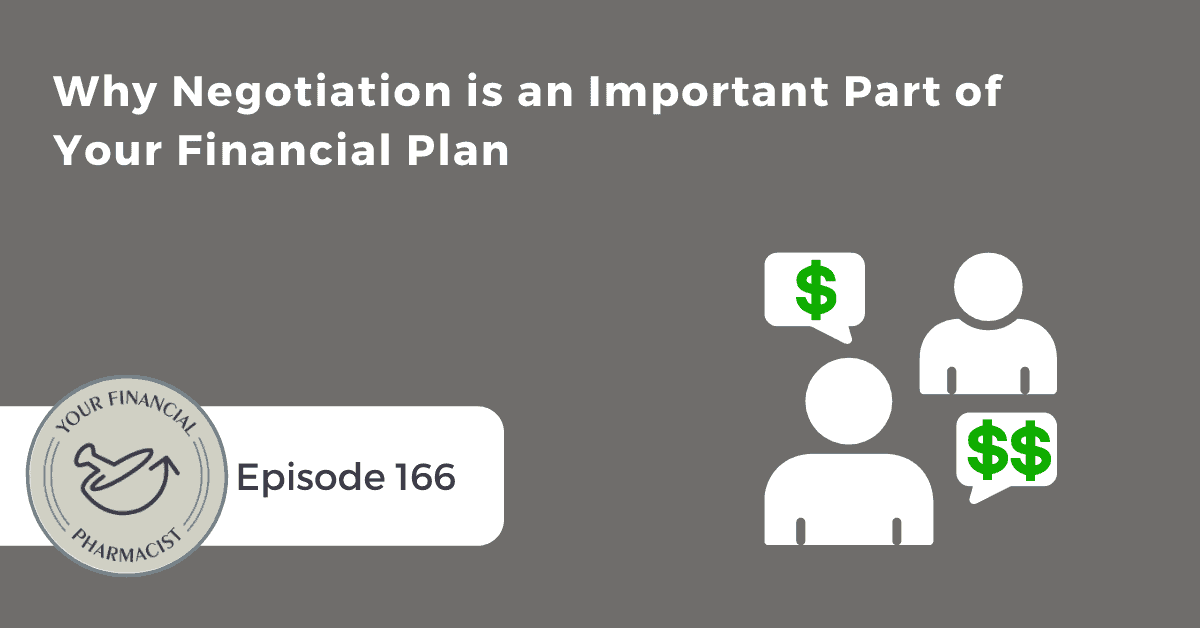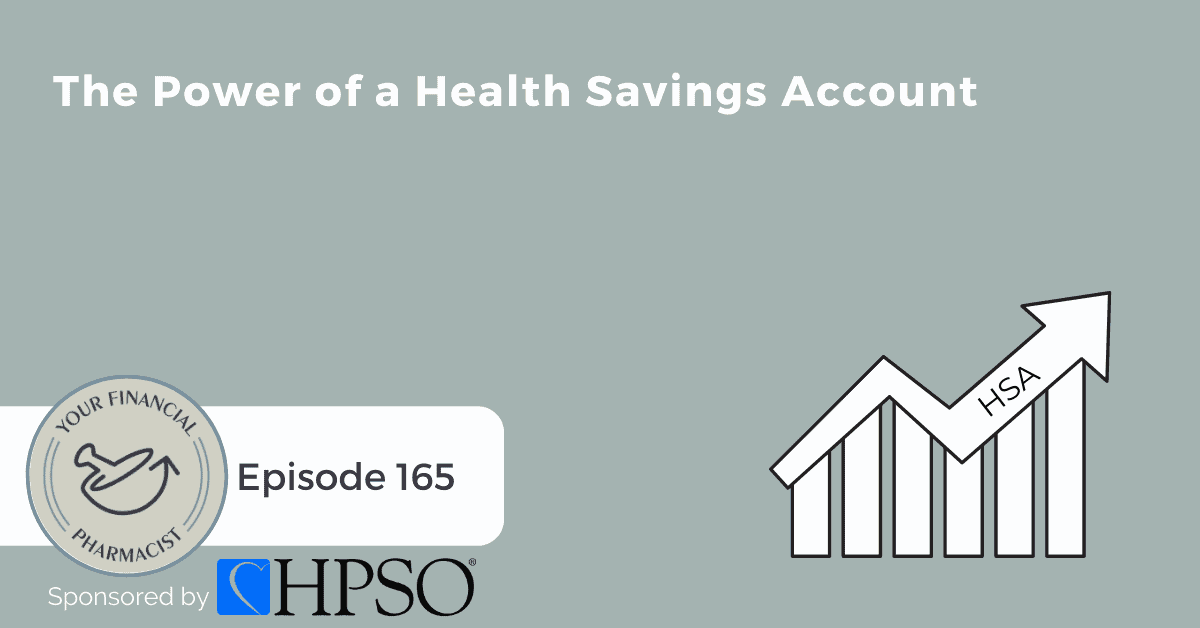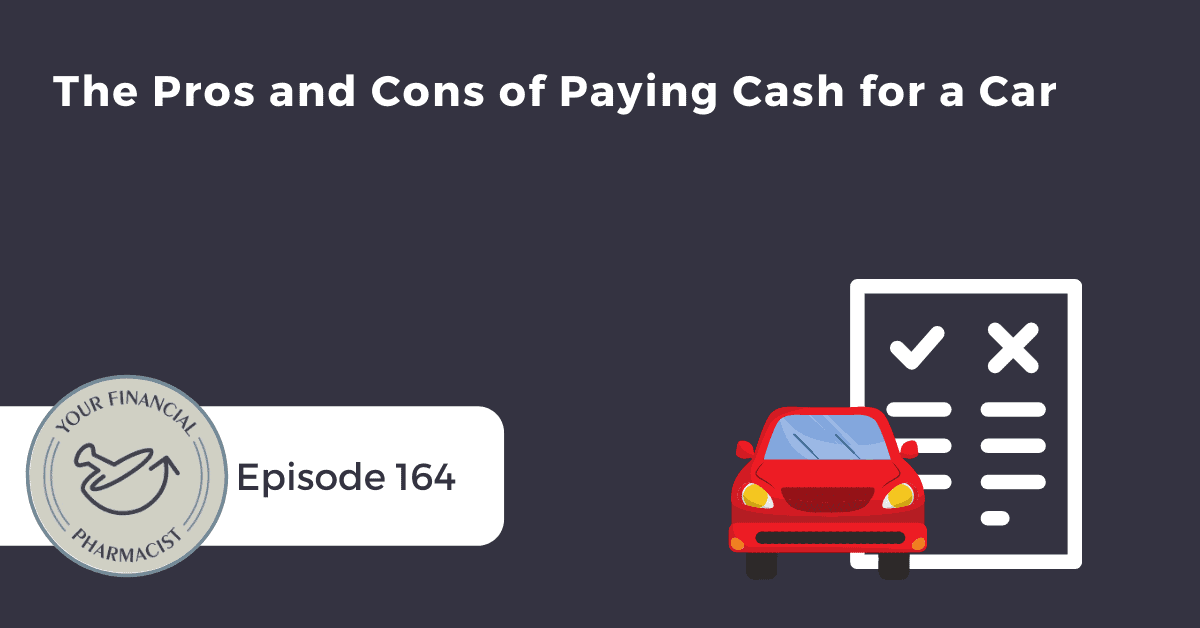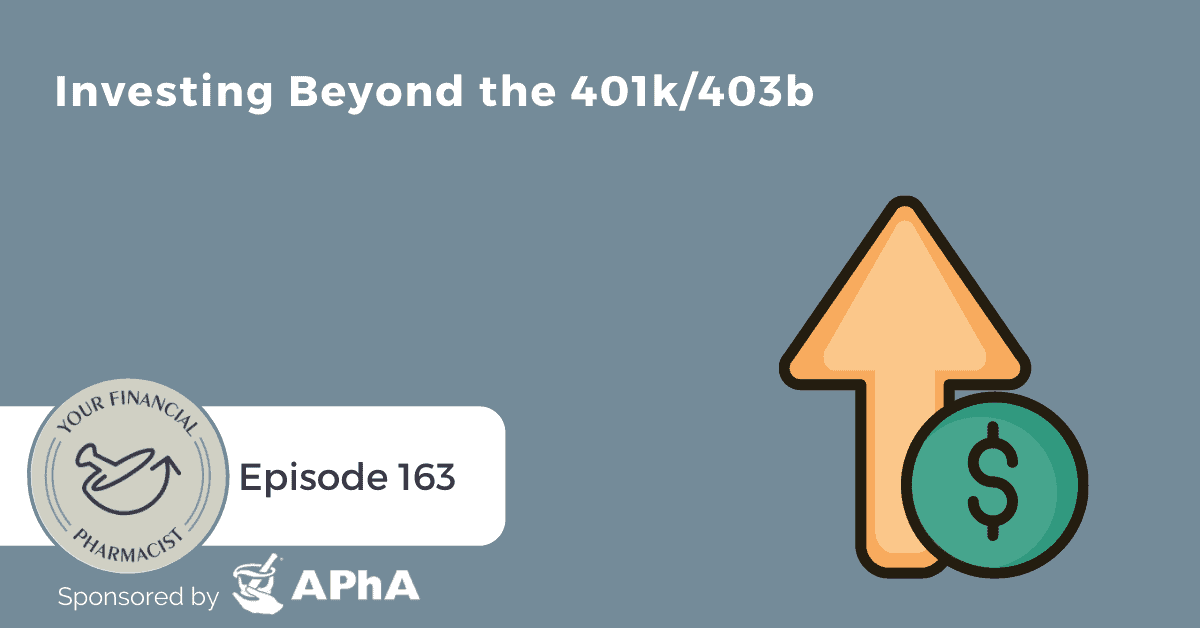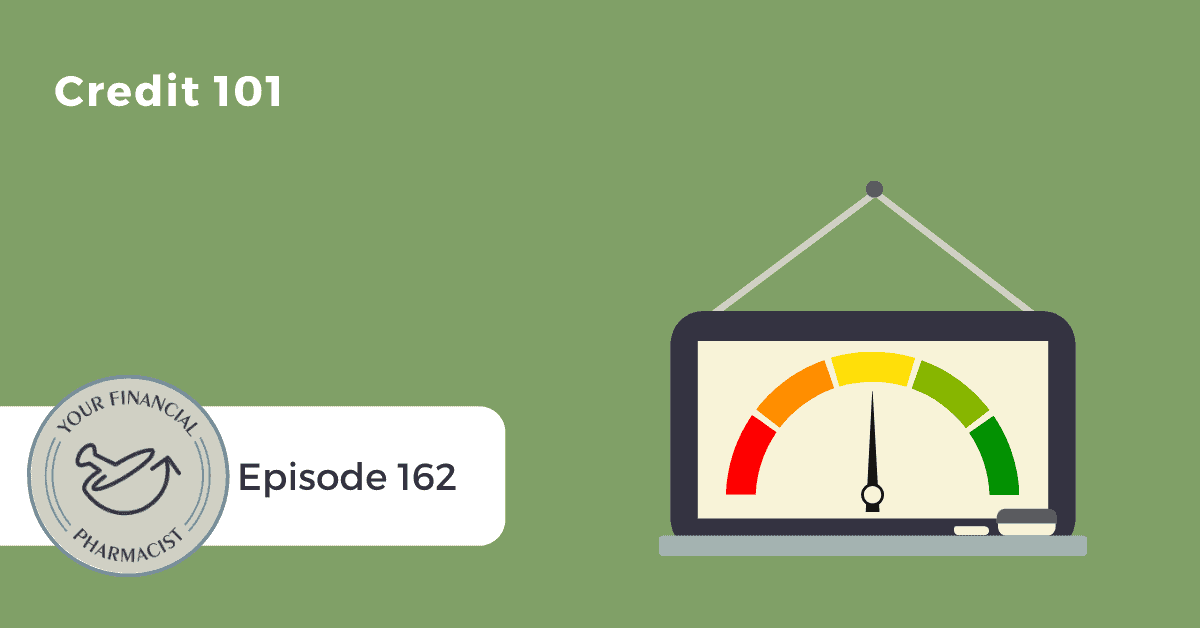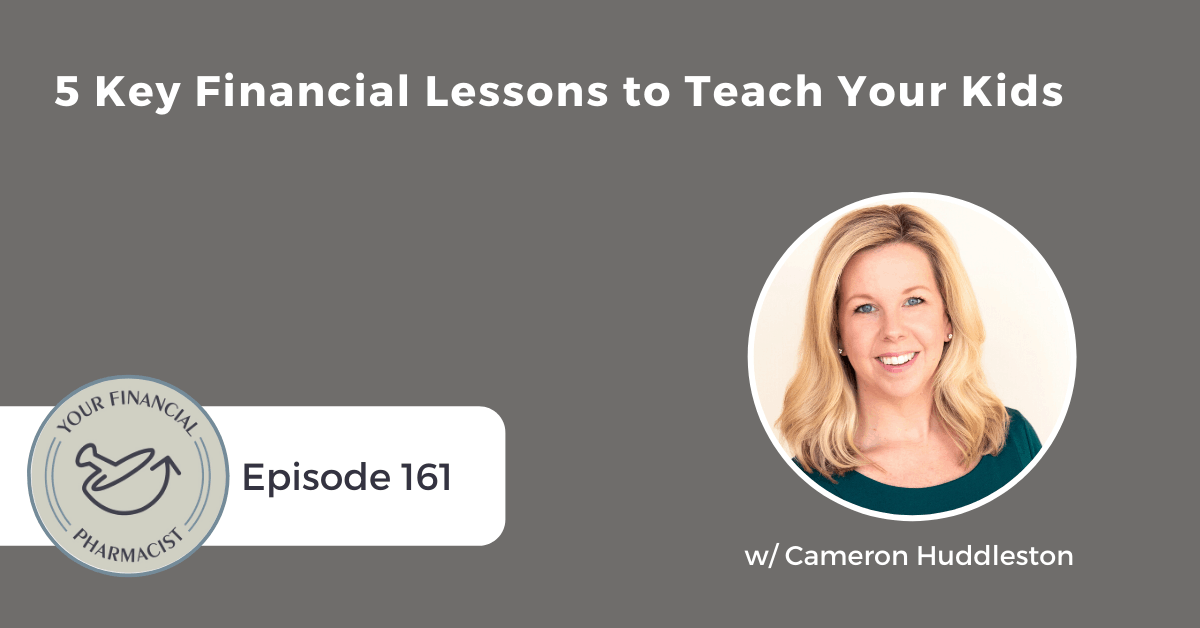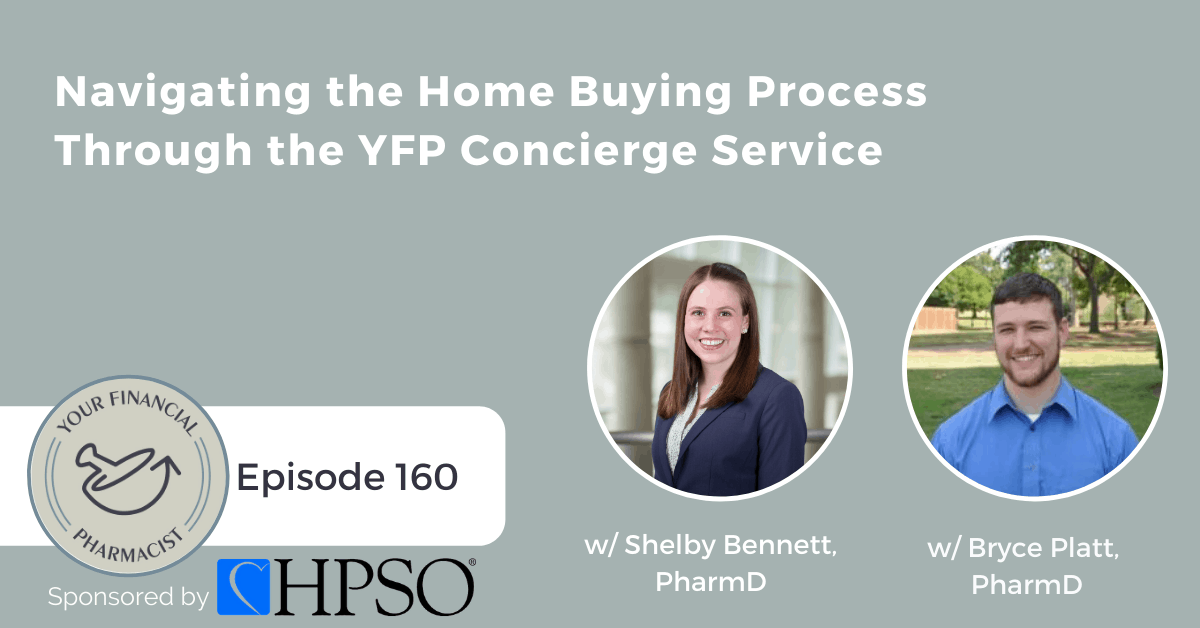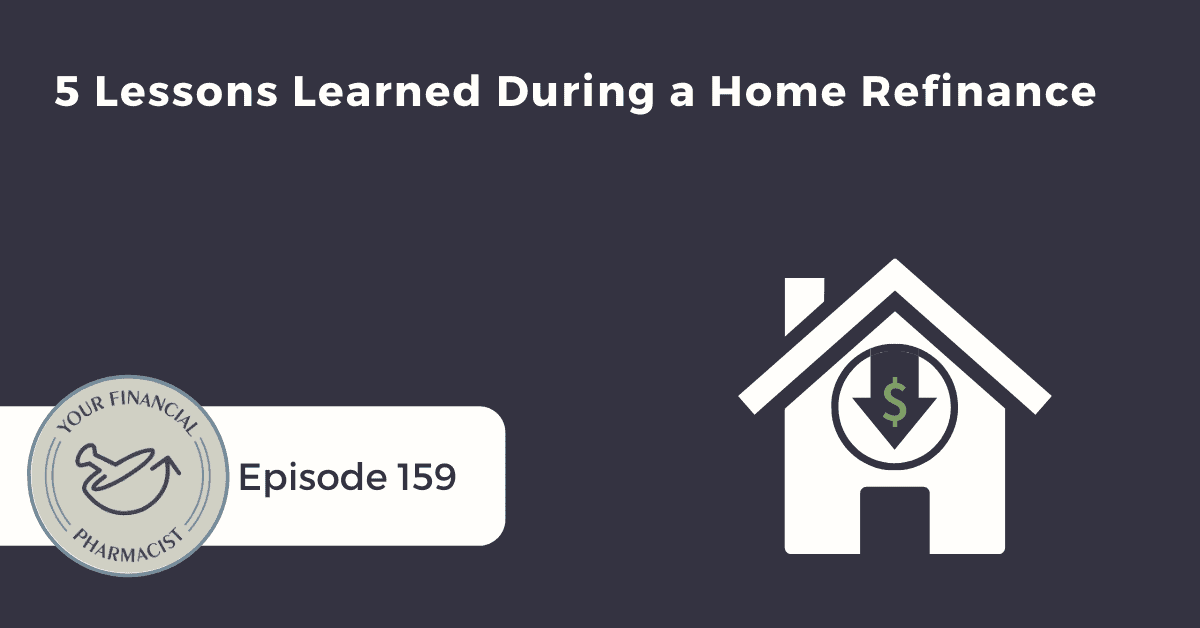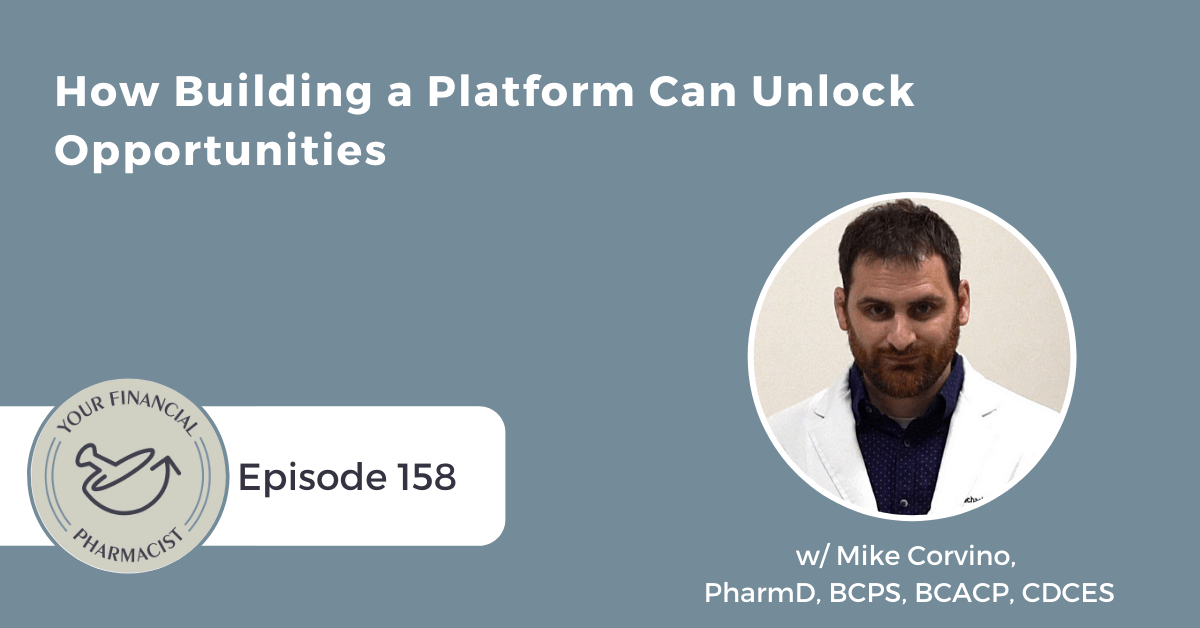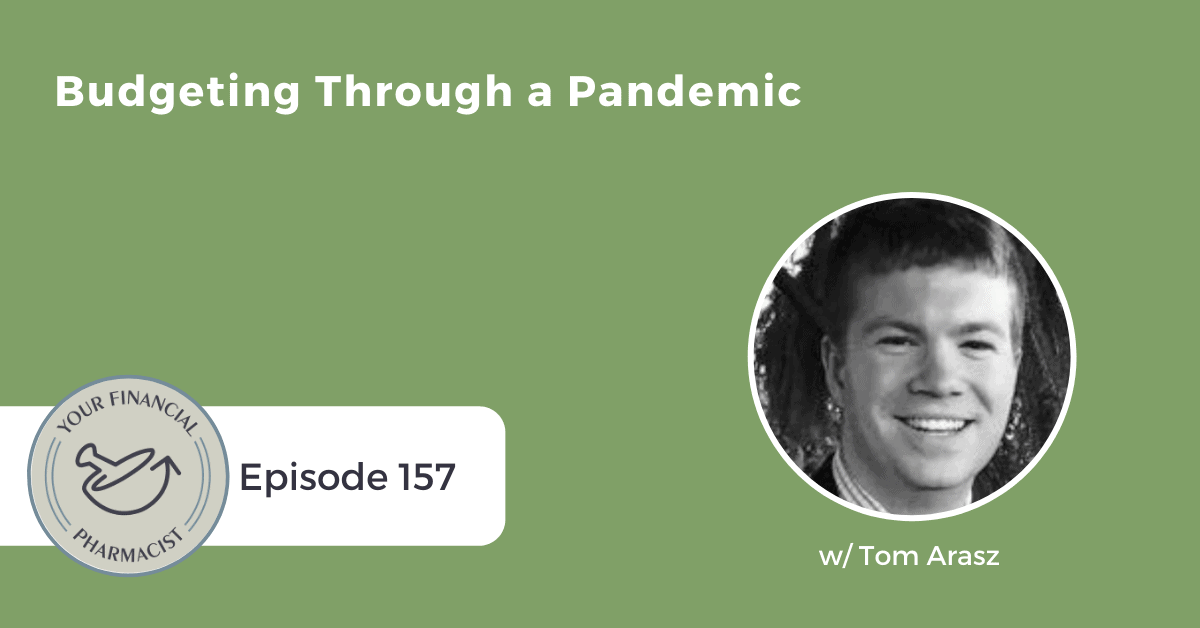Why Negotiation is an Important Part of Your Financial Plan
Tim Baker and Tim Ulbrich talk all things negotiation. They discuss what it is, where it can be used, why it’s important to your financial plan, the goals of negotiation and tips and strategies for different parts of the negotiation process.
Summary
Tim Baker joins Tim Ulbrich on this episode to dig into all things negotiation. Negotiation is the process of discovery and a way to advocate for yourself and what your needs are. Tim Baker explains that negotiation is an important part of your financial plan for many reasons. He explains that settling for a lower salary can have a significant impact on your present and future finances because you may accrue less in retirement savings and potentially other investments. However, negotiation doesn’t just lie in your salary. You can also negotiate benefits like flex scheduling, paid time off as well as potentially parental leave and professional development opportunities, among others.
Tim Baker shares that 99% of hiring managers are expecting new hires to negotiate and build their initial offer as such. Many don’t end up negotiating because they don’t want to risk the offer being revoked, but Tim says that the majority of the time you should present a counter offer.
Tim then digs into the stages of the negotiation process that include the interview, receiving an offer, presenting a counter offer and accepting the offer and position. He shares many strategies and tips for each stage as well as additional techniques to use throughout the process.
Mentioned on the Show
- YFP Planning
- Never Split the Difference: Negotiating as if Your Life Depended on It by Chris Voss
- SHRM (Society for Human Resource Management)
- Journal of Experimental Social Psychology
- Join the YFP Facebook Group
Episode Transcript
Tim Ulbrich: Tim Baker, welcome back to the show.
Tim Baker: Yeah, happy to be here. How’s it going, Tim?
Tim Ulbrich: It’s going. Excited to talk negotiation, something we discuss a lot in presentations, a lot I know that you discuss with clients as a part of the financial plan, but we haven’t addressed it directly on the show before. So I’m excited that we get a chance to dig into this topic. And we know that negotiation can carry a lot of power and can be used across the board really in life, right? It could be negotiating terms for a new or existing job position, buying a car, buying a house, negotiating with your kids or spouse — kidding, not kidding as we’ll talk about here in a little bit. So we’re going to focus predominantly on salary negotiation, but really these techniques can be applied to many areas of the financial plan and really life as a whole. So Tim, I know that for you, negotiation is a key piece of the financial plan. And you and our CFPs over at YFP talk about negotiation in the context of financial planning, which I would say is probably not the norm of the financial planning industry and services. So let’s start with this: Why is negotiation such an important piece of the financial plan?
Tim Baker: Yeah, so I think if we look at YFP’s mission, YFP’s mission is to empower pharmacists to achieve financial freedom. So I think the building blocks of that really is kind of what we do day-in and day-out with clients at YFP Planning. And what I typically, or the way that we typically approach a financial plan is we really want to help the client grow and protect their income, which is the lifeblood of the financial plan. Without income, nothing moves. But we know that probably more importantly than that is grow and protect the balance sheet, the net worth, which means increasing assets efficiently and decreasing liabilities efficiently and ultimately moving the net worth number in the right direction. So those are both quantitative things. But then qualitatively, we want to make sure that we’re keeping all the goals in mind, so grow and protect income and net worth while keep the goals in mind. So to me, that’s our jam, you know? So when I say — when somebody asks me a question like we do the Ask a YFP CFP, and I always say, “Well, it depends.” A lot of it really depends on those foundational, like where are we at with the balance sheet and where do we want to go? Meaning what are our goals? What’s our why? What’s the life plan, what’s a wealthy life for you and how can we support that with the financial plan? So to go back to your question, my belief is that the income is a big part of that.
Tim Ulbrich: Yes.
Tim Baker: And what I’ve found working with many, many pharmacists is sometimes pharmacists are not great at advocating for themselves. You know, most of the people that I talk to when we talk about salary negotiation, they’re like, eh, I’m just thankful I have a job, and I’m in agreement with that. But sometimes a little bit of a negotiation and having some of the skills that we’ll talk about today to better advocate for yourself is important. And a lot of this stuff is not necessarily just for salary. It can be for a lot of different things. But to me, what I saw as a need here, same thing like most financial planners don’t walk you through kind of home purchase and what that looks like because most financial planners are working with people in their 50s, 60s and 70s. So that was a need for a lot of our clients who were like, “Hey, Tim, I’m buying this house. I don’t really know where to start. So we provide some education and some recommendations and advice around that. Same thing with salary, I kept seeing like well, maybe I took the job too quickly or I didn’t advocate for myself, so that’s really where we want to provide some education and advice, again, to have a better position from an income perspective.
Tim Ulbrich: Yeah, and I think it’s a great tool to have in your toolbag, you know. And I think as we’ll talk about here, the goal is not to be an expert negotiator. There’s lots of resources that are out there that can help with this and make it tangible and practical, one of which we’ll draw a lot of the information today, I know you talk with clients, a resource I love, “Never Split the Difference” by Chris Voss. But I’m glad you mentioned, you know, I think there is often a sentiment — I know I’ve felt in myself where you know what, I’m glad to have a position, I’m glad to be making a good income. But that can be true and you still can be a good person and you still can negotiate and advocate for yourself and the value you bring to the organization.
Tim Baker: Yes.
Tim Ulbrich: So I hope folks will hear that and not necessarily think that negotiation is bad and as we’ll talk about here in a moment, I think really can have a significant impact when you think about it as it relates to earnings over your career and what those additional earnings could mean. So Tim, break it down for us. What is negotiation and really, digging further, why is it important?
Tim Baker: Yeah, so negotiation, you know, it’s really a process of discovery. It really shouldn’t be viewed as a battle. It’s really a process of discovery. It’s kind of that awkward conversation that you should be obligated to have because you know, if you don’t want to advocate for yourself professionally, who will? And maybe you have a good mentor or something like that, but to me, the negotiation, again, is really to discover what you want and kind of what your counterpart, which might be a boss or a hiring manager or something like that. And it’s really important because settling for a lower salary can have really major financial consequences, both immediately and down the road. And you typically — raises that you receive are typically based on a percentage of your salary, so hey, we’re going to give you a 3% raise this year, a 5% raise. If you start off with a salary that you’re not happy with, then obviously that’s a problem. Accrue less in retirement savings, so that TSP, that 401k, 403b, again, you typically are going to get some type of match in a lot of cases, and then you’re going to put a percentage. So again, that could potentially be lower. But it’s not just about salary. It can be — I think another mistake that sometimes people make is that they’ll say, oh wow, I was making $125,000 and I’m taking a job that’s paying me $135,000 and they take a major step back on some of the non-salary things like benefits and flex scheduling and time off and things like that. But you know, you really want to make sure that compensation package that you have, you know, you’re happy with. Because underpaid really can make you feel resentful over the long run. So you want to make sure that you’re, again, right now we’re filming in the midst of a pandemic and the economy and the job market is tough, but you still want to advocate for yourself and make sure you’re getting the best compensation package that you can.
Tim Ulbrich: Yeah, and as we’ll talk about here in a little bit, I think if we frame this differently, then maybe our understanding, our preconceived beliefs — you know, you mentioned it’s not a battle, you know, I think the goal is that you’re trying to come to an agreement or an understanding. And as we’ll talk about here, many employers are likely expecting this. And that number, in terms of those that are expecting versus those that are actually engaging in the conversation from an employee standpoint is very different.
Tim Baker: Sure.
Tim Ulbrich: So I think that might help give us confidence to be able to initiate some of those, and we’ll talk about strategies to do that. I do want to give one example, though, Tim, real quick. You had mentioned obviously if somebody earns less and receive small raises or they accrue less in retirement savings, that can have a significant impact. And I went down the rabbit hole prepping for this episode of just looking at a quick example of this where you have two folks that let’s say they both start working at the age of 28, they retire at their 65, so same starting point, same retirement age. Let’s assume they get a 3% cost of living adjustment every year for their career just to keep it simple. The only difference here is that one starts at $100,000 and one starts at $105,000. So because of either what they asked for in negotiations, whatever be the case, one starts $5,000 greater than the other. And if you play this out, same starting age, same ending age, same cost of living adjustments, one starts at a higher point, when it’s all said and done, one individual has about $300,000 more of earnings than the other. And this of course does not include differences that you also have because of higher salary. If you had a match, that would increase, that would compound, that would grow. If you were to switch jobs, you’re at a better point to now negotiate for a higher salary, all other benefits that aren’t included. But the significance of the starting point I think is something to really look at those numbers that often where you start can inform where you’re going, not only from cost of living adjustments but also future employment, right? So we know that where you start if you get a 3% raise, it’s of course going to be based off that number. If you decide to leave that employer and you go to another one, what do they ask you? How much did you make? You’re using that number. So that starting point is so critical, and I hope that new practitioners might even find some confidence in that to be able to engage in discussions knowing how significant those numbers can be over a career. So in that one example, that starting point is a difference of about $300,000. Crazy, right, when you look at it over a long time period.
Tim Baker: Yeah, it’s nuts. And I’d play the devil’s advocate, on the other side of that is again, so much — just like everything else with the financial plan, you can’t look at it in a vacuum. We’ve had clients take a lot less money and really, it was because of the student loans and how that would affect their strategy in terms of forgiveness and things like that.
Tim Ulbrich: Yes.
Tim Baker: So it is multifactorial. It’s definitely something that it should really be examined. And I think, again, when you look at the overall context of the financial plan. But to your point, Tim, that starting salary and really how you negotiate throughout the course of your career is going to be utterly important. And again, what we say is — we kind of downplay the income because I think so much of what’s kind of taught is like, oh, six-figure salary, you’ll be OK. And that’s not true. But then it is true that it is the lifeblood of the financial plan, so I think if you have a plan and you’re intentional with what you’re doing, that’s where you can really start making moves with regard to your financial outlook.
Tim Ulbrich: Yeah, and I’m glad you said that about salary shouldn’t be looked at in a silo. I mean, just to further that point, you’ve alluded to it already, these numbers don’t matter if there’s other variables that are non-monetary that matter more. Right? Whether that be time off or satisfaction in the workplace, opportunities that you have, feelings of accomplishment. I mean, the whole list of things you can’t necessarily put a number to, I mean, I would argue if those are really important, you’ve got to weigh those against whatever this number would be. And there’s a certain point where the difference in money isn’t worth it if there’s other variables that are involved, which usually there are. Hopefully we can get both, right? Salary and non-salary items.
Tim Baker: Yes.
Tim Ulbrich: So interesting stats about negotiation, I’ve heard you present before on this topic, but I’d like you to share with our audience in terms of managers that are expecting hires to negotiate versus those that do. Talk us through some of those as I think it will help us frame and maybe change our perception on employers expecting and our willingness to engage in these conversations.
Tim Baker: Yeah, and I really need to cite this one. And I believe this first stat comes from SHRM, which is the Society for Human Resource Management. So I think this is like the biggest association for like HR and Human Resource personnel in the country. And the stat that I use is that 99% of hiring managers expect prospective hires to negotiate. So if you think about that, you know, the overwhelming majority expect you the prospective hire to negotiate. And they build their initial offers as such. So the example I give to clients is like, hey, we have a position that we could pay anywhere from $110,000 to $130,000, knowing that you know, Tim, if I’m offering this job to you, knowing that you’re probably going to negotiate with me. I’m going to offer it to you for $110,000 knowing that I have a little bit of wiggle room if you kind of come back with a counteroffer. But what a lot of my clients or people do that I talk with is they’ll just say, yes, I found a job, crappy job market, happy to get started, ready to get started. And they’re either overly enthusiastic to accept a job or they’re just afraid that a little bit of negotiation would hurt their outlook. So with that in mind is that you — the offers I think are built in a way that you should be negotiating and trying to, again, advocate for yourself.
Tim Ulbrich: Yeah, and so if people are presenting positions often with a range in salary expecting negotiation, I hope that gives folks some confidence in OK, that’s probably expected and maybe shifts some of the perception away from, this whole thing could fall apart, which it could, right? At any given point in time, especially depending on the way you conduct yourself in that negotiation, which I think is really, really important to consider. But I think what we want to try to avoid, Tim, back to a comment you made earlier, is any resentment as well. I mean, if we think about this from a relationship standpoint, we want the employee to feel valued, and we want the employer to have a shot at retaining this individual long-term. So it’s a two-way relationship.
Tim Baker: Yeah, and it kind of comes up to where we were talking about what is the goal of negotiation. And really, the goal of negotiation is to come to some type of agreement.
Tim Ulbrich: Yeah.
Tim Baker: The problem with that is that people are involved in this. And we as people are emotional beings, so if we feel like that we’re treated unfairly or we don’t feel safe and secure or if we’re not in control of the conversation, our emotions can get the best of us. So that’s important. So again, there’s some techniques that you can utilize to kind of mitigate that. But you know, to allude to your point about negotiating, the fear to kind of potentially mess up the deal, there’s a stat that says 32% don’t negotiate because they’re too worried about losing the job offer.
Tim Ulbrich: Yeah.
Tim Baker: I know, Tim, like we can attest to this because with our growth at YFP, we’ve definitely done some human resourcing, to use that as a verb, and hiring and things like that of late. And I’ve got to say that the — I think that some of this can be unfounded just because there’s just so much blood, sweat and tears that goes into finding the right people to kind of surround yourself with and bring into an organization that to me, a little bit of back-and-forth is not going to ultimately lose the job. So typically most jobs, there’s — obviously there’s an application process, there’s interviews, there’s second interviews, there’s maybe on-site visits, there’s kind of looking at all the candidates and then extending offers. If you get to that offer stage, you’re pretty — they’ve identified as you’re the person that they want. So sometimes a little bit of back-and-forth is not going to derail any such deal. So it’s really, really important to understand that.
Tim Ulbrich: Yeah, and as the employer, I mean, we’ve all heard about the cost statistics around retention. So as an employer, when I find that person, I want to retain them. That’s my goal, right? I want to find good talent, I want to retain good talent. So I certainly don’t want somebody being resentful about the work that they’re doing, the pay that they have, and so I think if we can work some of that out before beginning, come to an agreement, it’s a good fit for us, good fit for them, I think it’s also going to help the benefit of hopefully the long-term relationship of that engagement. So it’s one thing to say we should be doing it. It’s another thing to say, well how do we actually do this? What are some tips and tricks for negotiation? So I thought it would be helpful if we could walk through some of the stages of negotiation. And through those stages, we can talk, as well as beyond that, what are some actual strategies to negotiation. Again, another shoutout to “Never Split the Difference” by Chris Voss. I think he does an awesome job of teaching these strategies in a way that really helps them come alive and are memorable.
Tim Baker: Yeah.
Tim Ulbrich: So Tim, let’s talk about the first stage, the interview stage, and what are some strategies that those listening can take when it comes to negotiation in this stage.
Tim Baker: Yeah, so when I present these concepts to a client, I kind of said that the four stages of negotiation are fairly vanilla, you know? And the first one is that interview. So when you get that interview, what I say is typically you want to talk less, listen more and learn more. Typically, the person that is talking the most is not in control of the conversation. The one that’s listening and asking good questions is in control. And I kind of think back to some of our recent hires, and you know, the people that we identified as like top candidates, I’m like, man, their interviews went really well. And when I actually think back and slow down, it’s really — I think that they went really well because it’s really that person asking good questions and then me just talking. And that’s like the perception. So in that case, the candidate was asking us good questions and we’re like, yeah, this was a great interview because I like to hear myself talk or I just get really excited about what we’re doing at YFP. So I think if you can really focus on your counterpart, focus on the organization, whether it’s the hospital or whatever it is and learn and then really pivot to the value that you bring, I think that’s going to be most important. So you know, understanding what some of their pain points are, whether it’s retention or maybe some type of care issue or whatever that may be, you can kind of use that to your advantage as you’re kind of going through the different stages of negotiation. But the more that the other person talks, the better. I would say in the interview stage, one of the things that often comes up that can come up fairly soon is the question about salary. And you know, sometimes that is — it’s kind of like a time savings. So it’s a “Hey, Tim, what are you looking for in salary?” If you throw out a number that’s way too high, I’m not even going to waste my time. And what I tell clients is like you typically, you want to — and we’ll talk about anchoring. You really want to avoid throwing a number out for a variety of reasons. So one of the deflections you can use is, “Hey, I appreciate the question, but I’m really trying to figure out if I’d be a good fit for your organization. Let’s talk about salary when the time comes.” Or the other piece of it is it’s just you’re not in the business of offering yourself a job. And what I mean by that it’s their job to basically provide an offer. So, “Hey, my current employer doesn’t really allow me to kind of reveal that kind of information. What did you have in mind?” Or, “We know that pharmacy is a small business, and I’m sure your budget is reasonable. What did you have in mind?”
Tim Ulbrich: Right.
Tim Baker: So at the end of the day, it’s their job to extend the offer, not you to kind of negotiate against yourself, which can happen. You know? I had — we signed on a client here at YFP Planning yesterday, and we were talking about negotiation. I think it had to do with a tax issue. And you know, he basically said this is what he was looking for and when he got into the organization, I think he saw the number that was budgeted for it, and it was a lot more. So again, if you can deflect that — and I tell a story, when I first got out of the Army, I kind of knew this. But when I first got out of the Army, I was interviewing for jobs. I was in an interview, and I deflected and I think the guy asked me again, and I deflected. I think he asked me for like — maybe he asked me four times, and I just wound up giving him a range that was like obnoxious, $100,000-200,000 or something like that. But to me, that — and the interview didn’t go well after that, but to me, it was more about clearing the slate instead of actually learning about me and seeing if I was a good fit. So you never want to lie if they ask about your current salary, you never want to lie. But you definitely want to deflect and move to things like OK, can I potentially be a good fit for your organization and then go from there.
Tim Ulbrich: Yeah, and I think deflection takes practice, right?
Tim Baker: Yeah.
Tim Ulbrich: I don’t think that comes natural to many of us.
Tim Baker: Absolutely. Yeah.
Tim Ulbrich: This reminds me, so talk less, listen more for any Hamilton folks we have out there, which is playing 24/7 in my house these days, the soundtrack. I’m not going to sing right now, but talk less, smile more, don’t let them know what you’re against or what you’re for. So I think that’s a good connection there to the interview stage. So next hopefully comes good news, company wants to hire you, makes an offer. So Tim, talk us through this stage. What should we be remembering when we actually have an offer on the table?
Tim Baker: Yeah, so I think you definitely want to be appreciative and thankful. Again, when a company gets to a point where they’re an extending you an offer, that’s huge. I remember when I got, again, my first offer out of the Army — because again, you didn’t really have a choice when you’re in the Army. Well, I guess you do have a choice, but they’re not like, “Here’s a written offer for your employment in this platoon somewhere in Iraq.” But I remember getting the first offer. I’m like, man, this is awesome. Shows your salary and the benefits and things like that, so you want to be appreciable and thankful — appreciative and thankful. You don’t want to be — you want to be excited but not too overexcited. So you don’t want to appear to be desperate. What I tell clients, I think the biggest piece here is make sure you get it in writing. And I have a story that I tell because if it’s not in writing, and what I essentially said is it didn’t happen. So again, using some personal experience here, first job out of the Army, I had negotiated basically an extra week of vacation because I didn’t want to take a step back in that regard. And I got the offer, and the extra week wasn’t there. So I talked to my future boss about it, and he said, “You know what, I don’t want to go back to headquarters and ruffle some feathers, so why don’t we just take care of that on site here?” And this was the job I had in Columbus, Ohio. And I said, “Yeah, OK, I don’t really want to ruffle feathers either.” The problem with that was when he got replaced, when he was terminated eight months later, that currency burned up fairly quickly. So I didn’t have that extra week of vacation. So if it’s not written down, it never happened. So you want to make sure that you get it in writing and really go over that written offer extensively. So some employers, they’ll extend an offer, and they want a decision right away. I would walk away from that. To me, a job change or something of that magnitude, I think it warrants a 24-, if not a minimum 48-hour timeframe for you to kind of mull it over. And this is typically where I come in and help clients because they’ll say, “Hey, Tim, I got this offer. What do you think?” And we go through it and we look at benefits and we look at the total compensation package and things like that. But you want to ask for a time, some time to review everything. And then definitely adhere to the agreed-upon deadline to basically provide an answer or a counteroffer or whatever the next step is for you.
Tim Ulbrich: Yeah, and I think too, the advice to get it in writing helps buy you time, you know? I think you ask for it anyways. And I think the way you approach this conversation, you’re setting up the counteroffer, right? So the tone that you’re using, it’s not about being arrogant here, it’s not about acting like you’re not excited at all. I think you can strike that balance between you’re appreciative, you’re thankful, you’re continuing to assess if it’s a good fit for you and the organization, you want some time, you want it in writing, and you’re beginning to set the stage. And I think human behavior, right, says if something is either on the table or pulled away slightly, the other party wants it a little bit more, right?
Tim Baker: Yes.
Tim Ulbrich: So if I’m the employer and I really want someone and I’m all excited about the offer and I’m hoping they’re going to say yes and they say, “Hey, I’m really thankful for the offer. I’m excited about what you guys are doing. I need some time to think about x, y and z,” or “I’m really thinking through x, y or z,” like all of a sudden, that makes me want them more. You know?
Tim Baker: Sure.
Tim Ulbrich: So I think there’s value in setting up what is that counteroffer. So talk to us about the counteroffer, Tim. Break it down and some strategies to think about in this portion.
Tim Baker: Yeah, so you know, the counteroffer is I would say — the majority of the time, you should counter in some way. I think you’re expected to make a counter. And again, we kind of back that up with some stats. But you also, you need to know when not to kind of continue to go back to the negotiating table or when you’re asking or overasking. So I think research is going to be a good part of that. And what I tell clients is like, I can give them a very non-scientific — I’ve worked with so many pharmacists that I can kind of say, eh, that sounds low for this community pharmacy industry, or whatever, hospital, in this area. So your network, which could be someone like me, it could be colleagues, but it could also be things like Glass Door, Indeed, Salary.com. So you want to make sure that your offer, your counteroffer is backed up in some type of fact. And really, knowing how to maximize your leverage. So if you are — if you do receive more than one substantial offer from multiple employers, negotiating may be appropriate if the two positions are comparable. Or if you have tangible evidence that the salary is too low, you have a strong position to negotiate. So I had a client that knew that newly hired pharmacists were being paid more than she was, and she had the evidence to show that and basically they went back and did a nice adjustment. But again, I think as you go through — the way that we kind of do this with clients is we kind of go through the entire letter and the benefits. And I basically just highlight things and have questions about match or vacation time or salary, things like that. And then we start constructing it from there. So if you look at, again, the thing where most people will start is salary is you really want to give — when you counter, you really want to give a salary range rather than like a number. So what I say is, if you say, “Hey, Tim, I really want to make $100,000.” I kind of said it’s almost like the Big Bad Wolf that blows the house down. Like all of those zeros, there’s no substance to that. But if you said, “Hey, I really want to make $105,985,” the Journal of the Experimental Social Psychology says that using a precise number instead of a rounded number gives it a more potent anchor.
Tim Ulbrich: You’ve done your homework, right?
Tim Baker: Yeah. You know what you’re worth, you know what the position’s worth, it’s giving the appearance of research. So I kind of like — it’s kind of like the Zach Galfinakis meme that has all of the equations that are floating, it’s kind of like that. But the $100,000, you can just blow that house over. So and I think — so once you figure out that number, then you kind of want to range it. So they say if you give a range of a salary, then it opens up room for discussion and it shows the employer that you have flexibility. And it gives you some cushion in case you think that you’re asking for a little bit too high. So that’s going to be really, really important is to provide kind of precise numbers in a range. And oh, by the way, I want to be paid at the upper echelon of that.
Tim Ulbrich: So real quick on that, you mentioned before the concept of anchoring, and I want to spend some time here as you’re talking about a range. So dig into that further, what that means in terms of if I’m given a range, how does anchoring fit into that?
Tim Baker: Yeah, so we kind of talk about this more when we kind of talk some of the tools and the behavior of negotiation. But the range — so when we talk about like anchoring, so anchoring is actually — it’s a bias. So anchoring bias describes the common tendency to give too much weight to the first number. So again, if I can invite the listener to imagine an equation, and the equation is 5x4x3x2x1. And that’s in your mind’s eye. And then you clear the slate, and now you imagine this equation: 1x2x3x4x5. Now, if I show the average person and I just flash that number up, the first number — the first equation that starts with 5 and the second equation that starts with 1, we know that those things equal the same thing. But in the first equation, we see the 5 first, so it creates this anchor, creates this belief in us that that number is actually higher.
Tim Ulbrich: Yeah, bigger, yeah.
Tim Baker: So the idea of anchoring is typically that that number that we see really is a — has a major influence, that first number is a major influence over where the negotiation goes. So you can kind of get into the whole idea of factoring your knowledge of the zone of possible agreement, which is often called ZOPA. So that’s the range of options that should be acceptable for both sides, and then kind of assessing your side of that and then your other party’s anchor in that. So there’s lots of things that kind of go into anchoring, but we did this recently with a client where I think they were offered somewhere in like the $110,000-112,000 area. And she’s like, I really want to get paid closer to like $117,000-118,000. So we basically in the counteroffer, we said, “Hey, thanks for the offer.” And we did something called an accusation, which we can talk about in a second. But “Thanks for the counteroffer, but I’m really looking to make between” — you know, I think we said something like $116,598 to all the way up into the $120,000s. And they actually brought her up to I think she was at $117,000 and change. So it actually brought her up closer to that $118,000. So using that range and kind of that range as a good anchoring position to help the negotiation.
Tim Ulbrich: Yeah, love it.
Tim Baker: There’s lots of different things that kind of go into anchoring in terms of extreme anchoring and a lot of that stuff that they talk about in the book, but again, that kind of goes back to that first number being thrown out there can be really, really integral. And again, when you couple that on top of hey, it’s their job to make you an offer, not the other way around, you have to really learn how to deflect that and know how to position yourself in those negotiations. But that’s really the counteroffer. And what I would say to kind of just wrap up the counteroffer is embrace the silence.
Tim Ulbrich: Yeah.
Tim Baker: So Tim, there was silence there, and I’m like, I want to fill the void. And I do this with clients when we talk about mirroring and things like that. Like people are uncomfortable with silence. And what he talks about in the book, which I would 100% — this is really kind of a tip of the cap to Chris Voss and his book, which I love, I read probably at least once a year, where he talks about embracing the silence. We as people are conditioned to fill silences. So he talks about sometimes people will negotiate against themselves. If you just sit there and you say, “Uh huh. That’s interesting.” And then in the counter, just be pleasantly persistent on the non-salary terms, which can be both subjective and objective in terms of what you’re looking for in that position.
Tim Ulbrich: Yeah, and I want to make sure we don’t lose that. We’re talking a lot about salary, but again, as we mentioned at the beginning, really try to not only understand but fit what’s the value of those non-salary terms. So this could be everything from paid time off to obviously other benefits, whether that be health or retirement. This of course could be culture of the organization, whether it’s that specific site, the broader organization, opportunities for advancement.
Tim Baker: Mentorship. Yep. Mentorship.
Tim Ulbrich: Yes, yes.
Tim Baker: Yep, all of that.
Tim Ulbrich: And I think what you hear from folks — I know I’ve felt in my own personal career, with each year that goes on, I value salary, but salary means less and those other things mean more. And so as you’re looking at let’s just say two offers, as one example, let’s say they’re $5,000 apart. I’m not saying you give on salary, but how do you factor in these other variables.
Tim Baker: Yeah. Well, and I think too — and this is kind of next level with this, and I’ll give you some examples to cite it. I think another thing to potentially do when you are countering and when you’re shifting to some of maybe the non-salary stuff is really took a hard look at your potential employer or even your current employer if you’re an incumbent and you’re being reviewed and you’re just advocating for a better compensation, is look at the company’s mission and values. So the example I give is like when Shea and I got pregnant with Liam, she didn’t have a maternity leave benefit. And when she was being reviewed, we kind of invoked the company — and I think it’s like work-life balance and things like that — and we’re like, “Well, how can you say that and not back that up?” And again, we did it tactfully. Because you’re almost like negotiating against yourself, right? So when I present this to clients, the Spiderman meme where two Spidermans are pointing at each other, and she was able to negotiate a better, a maternity — and we look at us, and I give these, one of our values is encouraging growth and development. So if an employee says, hey, and they make a case that I really want to do this, it’s almost like we’re negotiating against ourselves. So I think if you can — one, I think it shows again the research and that you’re really interested and plugged into what the organization is doing — but then I think you’re leveraging the company against itself in some ways because you’re almost negotiating against well, yeah, we put these on the wall as something that we believe in. But we’re not going to support it or you know. Or at the very least, it plants a seed. And that’s what I say is sometimes with clients, we do strike out. It is hard to move the needle sometimes, but at least one, we’ve got an iteration under our belts where we are negotiation, and two, we’ve planted a seed with that employer — assuming that they took the job anyway — that says OK, these are things that are kind of important to me that we’re going to talk about again and things like that. So I think that’s huge.
Tim Ulbrich: Good stuff. So let’s talk about some tools that we can use for negotiation. And again, many of these are covered in more detail in the book and other resources, which we’ll link to in the show notes. I just want to hit on a few of these. Let’s talk about mirroring, accusation audits, and the importance of getting a “That’s right” while you’re in these conversations. And we’ll leave our listeners to dig deeper in some of the other areas. So talk to us about mirroring. What is it? And kind of give us the example and strategies of mirroring.
Tim Baker: Yeah, and I would actually — Tim, what I would do is I would actually back up because I think probably one of the most important tools that are there I think is the calibrated question. So that’s one of the first things that he talks — and the reason, so what is a calibrated question? So a calibrated question is a question with really no fixed answer that gives the illusion of control. So the answer, however, is kind of constrained by that question. And you, the person that’s asking the question, has control of the conversation. So I give the example, when we moved into our house after we renovated it — so brand new house. I walk into my daughter’s room, I think she was 4 at the time, and she’s coloring on the wall in red crayons. And I’m from Jersey, so I say “crown” not “crayon.” And I look at her, and I say, “Olivia, why are you doing that?” And she sees how upset I am and mad and she just starts crying. And there’s no negotiation from there.
Tim Ulbrich: Negotiation over.
Tim Baker: There’s no exchange of information. So in an alternate reality, in an alternate reality, what I should have done is said, “Olivia, what caused you to do that?” So you’re basically blasting — instead of why — why is very accusatory — you’re like, the how and the what questions are good. So and of course she would say, “Well, Daddy, I ran out of paper, so the wall is the next best thing.” So the use of — and having these calibrated questions in your back pocket, I think again buys you some time and really I think frames the conversation with your counterpart well. So using words like “how” and “what” and avoiding things like “why,” “when,” “who.” So, “What about this works, doesn’t work for you?” “How can we make this better for us?” “How do you want to proceed?” “How can we solve this problem?” “What’s the biggest challenge you face?” These are all — “How does this look to you?” — these are all calibrated questions that again, as you’re kind of going back and forth, you can kind of lean on. So have good how and what questions. To kind of answer the question about mirroring, as you’re asking these questions, you’re mirroring your counterpart. So what mirroring, the scientific term is called isopraxism. But he defines and says “the real-life Jedi mind trick.” This causes vomiting of information is what he says. So you know, these are not the droids you’re looking for. So what you essentially is you repeat back the last 1-3 words or the critical words of your counterpart’s sentence, your counterpart’s sentence. So this is me mirroring myself. Yeah, well you want to repeat back because you want them to reveal more information. And you want to build rapport and have that curiosity of kind of what is the other person thinking so you can, again, come to an agreement. Come to an agreement? Yeah. So at the end of the day, the purpose — so this is mirroring. So I’ll show you a funny story. I practice this on my wife sometimes, who does not have a problem speaking. But sometimes the counterpart is —
Tim Ulbrich: She’s listening, by the way.
Tim Baker: Yeah, exactly. So I’ll probably be in trouble. But so I basically just for our conversation, just mirror back exactly what she’s saying. And you can do this physically. You can cross your legs or your arms or whatever that looks like. But what he talks about more is with words. And you know, I’ll basically just mirror back my wife, and she — at the end of the conversation, she’ll say something like, “Man, I feel like you really listened to me.” And I laugh about that because I’m just really repeating back. But if you think about it, I did. Because for you to be able to do that, you really do have to listen. So mirroring, again, if you’re just repeating back, you really start to uncover more of what your counterpart is thinking because often, like what comes out of our mouth the first or even second time is just smoke. So really uncovering that. One of the things he talks about is labeling where this is kind of the — it’s described as the method of validating one’s emotion by acknowledging it. So, “It seems like you’re really concerned about patient care. It seems like you’re really concerned about the organization’s retention of talent. So what you’re doing is that you’re using neutral statements that don’t involve the use of “I” or “we.” So it’s not necessarily accusatory. And then you are — same with the mirror. You really want to not step on your mirror. You want to not stop on your label and really invite the other person to say, “Yeah, I’m just really frustrated by this or that.” So labeling is really important to basically defuse the power, the negative emotion, and really allow you to remain neutral and kind of find out more about that. So that’s super important.
Tim Ulbrich: Yeah, and I think with both of those, Tim, as you were talking, it connects well back to what we mentioned earlier of talk less, listen more.
Tim Baker: Yeah.
Tim Ulbrich: Like you’re really getting more information out, right, from a situation that can be guarded, you know, people are trying to be guarded. And I think more information could lead hopefully to a more fruitful negotiation. What about the accusation audit?
Tim Baker: Yeah, so the accusation audit, it’s one of my favorites, kind of similar with calibrated questions. I typically will tell clients, I’m like, “Hey, if you don’t learn anything from this, I would say have some calibrated questions in your back pocket and have a good accusation audit at the ready.” And we typically will use the accusation audit to kind of frame up a counteroffer. So it kind — so before I give you the example, the accusation audit is a technique that’s used to identify and label probably like the worst thing that your counterpart could say about it. So this is all the head trash that’s going on of why I don’t want to negotiate. It’s like, ah, they’re going to think that I’m overasking or I’m greedy, all those things that you’re thinking. So you’re really just pointing to the elephant in the room and you’re just trying to take this thing out and really let the air out of the room where a lot of people just get so nervous about this. So a good accusation audit is, “Hey, Tim, I really appreciate the offer of $100,000 to work with your organization. You’re probably going to think that I’m the greediest person on Planet Earth, but I was really looking for this to that.”
Tim Ulbrich: That’s a great line. Great line.
Tim Baker: Or, “You’re probably thinking that I’m asking way too much,” or, “You’re probably thinking that I’m way underqualified for this position, but here’s what I’m thinking.”
Tim Ulbrich: “No. No, no, no, Tim.”
Tim Baker: Right. So when someone says that to me, I’m like, “No. I don’t think that.” And what often happens — and again, clients have told me this — what often happens is that the person, the counterpart that they’re working with, like they’re recruited as — one person said, one client was like, “Oh, we’re going to find you more money. We’re going to figure it out.” So they like — so when someone says that to you, just think about how you would feel. “Oh, I don’t think that at all.” And then it just kind of lets the air out of the room. So you basically preface your counteroffer with like the worst thing they could say about you, and then they typically say, “That’s not true at all.”
Tim Ulbrich: Yeah.
Tim Baker: So I love the accusation audit. So simple, it’s kind of easy to remember. And I think it just lays I think the groundwork for just great conversation and hopefully a resolution.
Tim Ulbrich: That’s awesome. And then let’s wrap up with the goal of getting to a “That’s right.” I remember when I was listening to an interview with Chris Voss, this was a part that I heard and I thought, wow, that’s so powerful. If you can get — in the midst of this negotiation, if we can get to a “Yeah, that’s right,” the impact that could have on the impact.
Tim Baker: Yeah, so he kind of talks about it like kind of putting all of these different tools together. So it’s mirroring and labeling and kind of using I think what he calls minimal encouragement, “Uh huh,” “I see,” kind of paraphrasing what you hear from your counterpart. And then really wait for — it’s like, “Hey, did I get that right? Am I tracking?” And what you’re really looking for is a “That’s right.” He said that’s even better than a “Yes.” So one of the examples I give is when I speak with prospective clients, we’re talking about my student loans and my investment portfolio and I’m doing real budgeting, and I got a sold a life insurance policy that I think isn’t great for me. And so we go through all of these different parts of the financial plan. And I’m basically summarizing back what they’re saying. And I say, you know, at the end of it — so I’m summarizing 30 minutes of conversation. And I’m saying, “Did I get that right?” And they’re like, “Yeah, that’s right. You’re a great listener,” which I have to record for my wife sometimes because she doesn’t agree with me. So that’s what you’re looking for is “Yeah, that’s right.” This person has heard, message sent, heard, understand me. He says if you get a “You’re right,” so sometimes, again, I keep talking about my wife, I’m like, “Hey, we have to do a better job of saving for retirement,” and she’s like, “You’re right.” That’s really code for “Shut up and go away.” So it’s a “That’s right” really what we’re looking for.
Tim Ulbrich: Awesome.
Tim Baker: So that’s very powerful.
Tim Ulbrich: That’s great stuff. And really, just a great overall summary of some tips within the negotiation process, the steps of the negotiation process, how it fits into the financial plan. We hope folks walk away with that and just a good reminder of our comprehensive financial planning services that we do at YFP Planning. This is a great example of when we say “comprehensive,” we mean it. So it’s not just investments, it’s not just student loans. It’s really every part of the financial plan. Anything that has a dollar sign on it, we want our clients to be in conversation and working with our financial planners to make sure we’re optimizing that and looking at all parts of one’s financial plan. And here, negotiation is a good example of that. So we’ve referenced lots of resources, main one we talked about here today was “Never Split the Difference” by Chris Voss. We will link to that in our show notes. And as a reminder to access the show notes, you can go to YourFinancialPharmacist.com/podcast, find this week’s episode, click on that and you’ll be able to access a transcription of the episode as well as the show notes and the resources. And don’t forget to join our Facebook group, the Your Financial Pharmacist Facebook group, over 6,000 members strong, pharmacy professionals all across the country committed to helping one another on their own path and walk towards financial freedom. And last but not least, if you liked what you heard on this week’s episode of the podcast, please leave us a rating and review on Apple podcasts or wherever you listen to the show each and every week. Have a great rest of your day.
Current Student Loan Refinance Offers
[wptb id="15454" not found ]Recent Posts
[pt_view id=”f651872qnv”]

